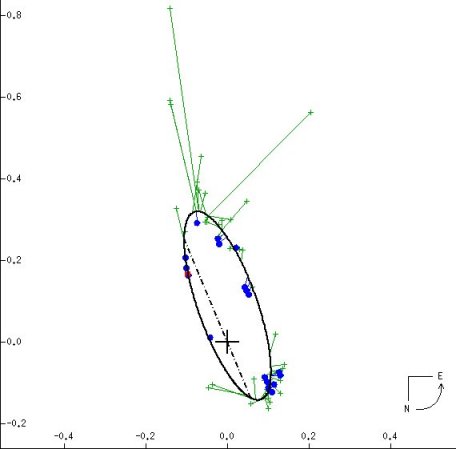
 |
The two hot class B dwarfs that make Lambda Lupi are only a few tenths of a second of arc apart (note the scales) and are difficult to separate without sophisticated equipment. The best fit of an elliptical path to the observed positions of Lambda Lupi B relative to Lambda A (at the cross) shows the two stars to go around each other every 70.8 years. The major axis (the dot-dash line) and the focus (the cross, where we find Lambda A) of the true orbit are offset from the observed because of a 71 degree tilt of the actual orbit to the plane of the sky and by its orientation. From the true orbit, the two stars average 61.8 Astronomical units apart, a high eccentricity taking them between 29 and 100 AU away from each other. Though "B" is charted to go about "A," the two stars really orbit each other around a common center of mass that lies between them and whose location is determined by the mass ratio, which in Lambda Lupi's case has not been found directly through observation. Application of Kepler's laws yields a total mass that is much higher than expected for these class B3 dwarfs, so something must be wrong. The pair needs more observation over a longer period of time. From the Sixth Catalog of Orbits of Visual Binary Stars , W. I. Hartkopf and B. D. Mason, US Naval Observatory Double Star Catalog, 2006. |